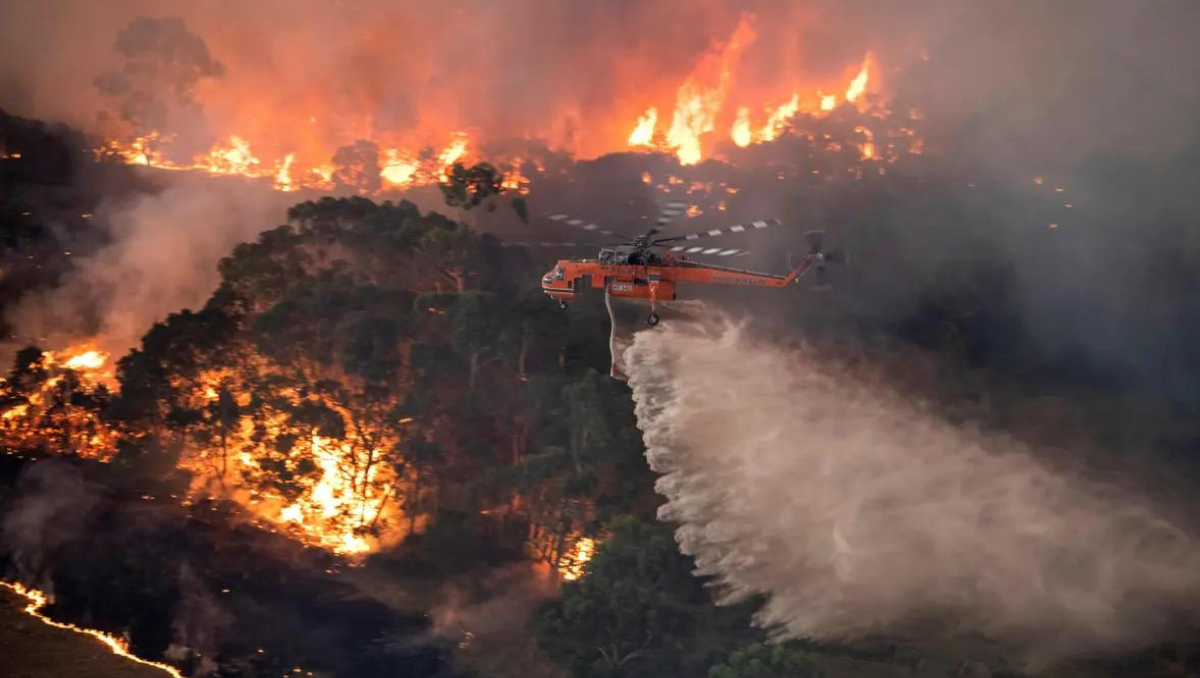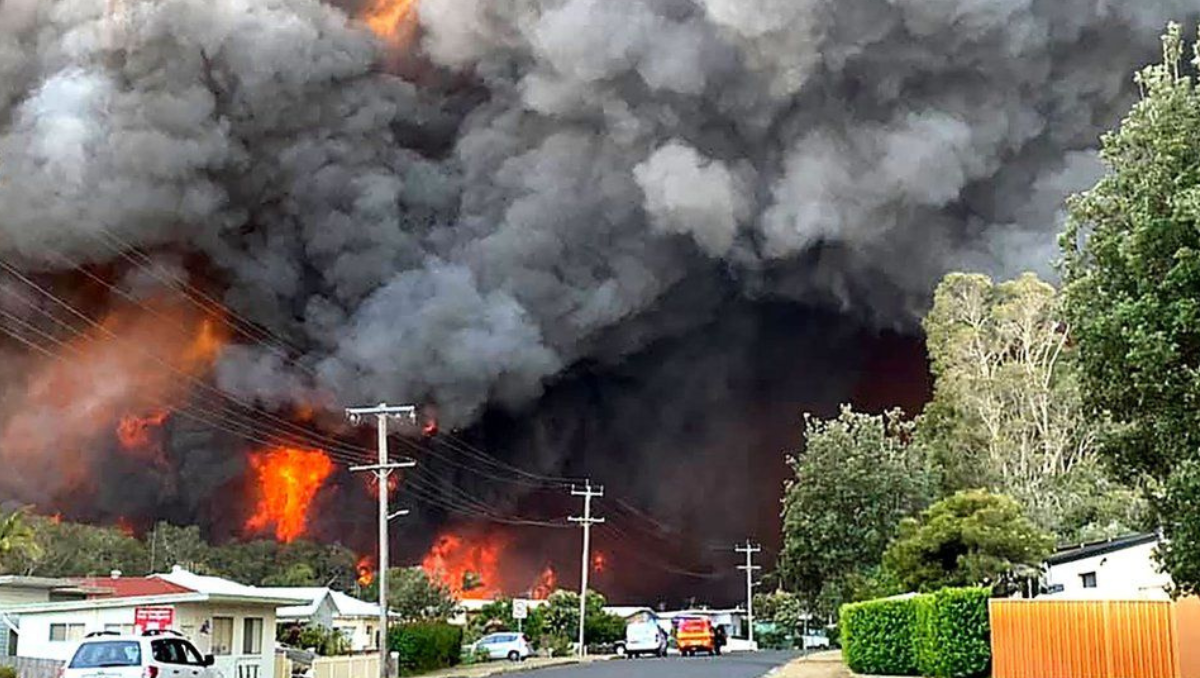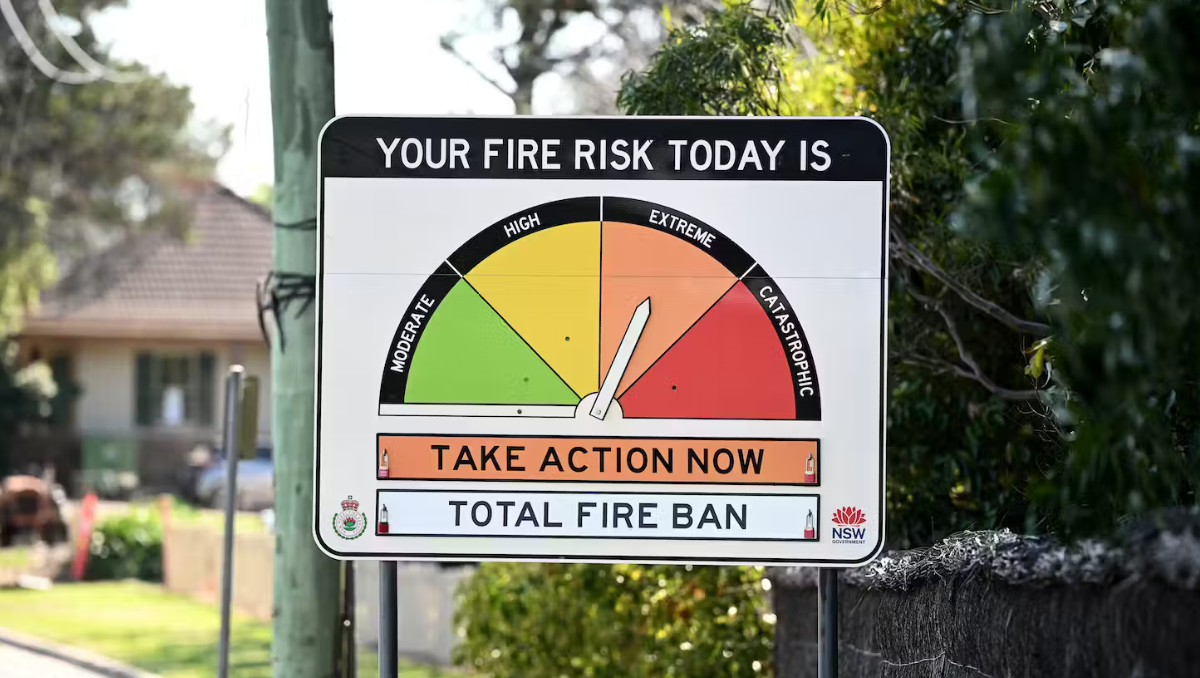In less than 24 hours after residents in certain areas of Australia’s Victoria state evacuated due to bushfires, state authorities are now issuing warnings about flooding.
Heavy rain has extinguished flames and caused rivers to rise in this southeastern state. As night fell on the east coast of Australia, there were 86 fires burning in New South Wales, with 29 of them still uncontained. Over 1,300 firefighters are actively working to gain control over these fires.

The Australian Bureau of Meteorology predicts flash flooding in northeastern Victoria throughout Wednesday, especially in areas that were recently ablaze, covering around 17,000 hectares.
Overnight, first responders rescued a farmer who had become trapped while attempting to drive through floodwaters. According to Tim Wiebusch, chief officer of operations at Victoria state emergency service, some parts of the state received up to 150 millimeters of rain, nearly eight times the state’s average for September with more rainfall expected today.
“Fortunately we have seen some rainfall across those two fires,” he added.
Fire and Flood season warning- A potentially fierce battle ahead
Hot and dry winds are fanning flames across the southeastern region as Australia faces an unusually scorching spring.

The summer of 2019-20 will forever be remembered for the devastating Black Summer bushfires, serving as a stark reminder of Australia’s susceptibility to wildfires. These fires engulfed over 24 million hectares, directly causing 33 fatalities and nearly 450 more due to smoke inhalation. In total, roughly 20% of the country’s forests were consumed by flames.
The year 2019 marked Australia’s hottest and driest on record, but 2023 could potentially surpass that record as climate records continue to shatter globally, accompanied by a surge in extreme weather events. This year is expected to rank as the hottest on record worldwide, with the possibility of the record being broken again next year.
Despite three consecutive La Niña years bringing sustained rainfall, which spurred significant vegetation growth across Australia’s vast expanse of 125 million hectares of forests, bushlands, and grasslands, there’s growing concern that many areas could swiftly dry out in the coming weeks, becoming prime fuel for potential bushfires.
Is Australia prepared to tackle this grave crisis-
Australia’s cyclical wet and dry climate patterns offer one advantage: in wet years, fire authorities receive some respite. This respite allows governments, emergency services, and communities to collaborate, strategise, and equip themselves for upcoming bushfire seasons.
Conducting controlled burns remains a challenge. It’s difficult to find the ideal weather conditions for controlled fuel reduction burns that minimise intensity while avoiding the risk of the fire spreading or endangering properties.

Decades of bushfires have demonstrated that even the most thorough preparations can fall short on days of severe bushfire risk when firestorms can rapidly develop and exhibit unpredictable behaviour.
Every community possesses a unique risk profile, and individuals and communities differ significantly in their readiness and planning. If a fire ignites and approaches your home, you may be caught off guard if you lack a bushfire plan.
Firefighters emphasise that the pivotal decisions and actions that save lives and property during a bushfire are made by individuals and their communities, not by politicians or agencies.



